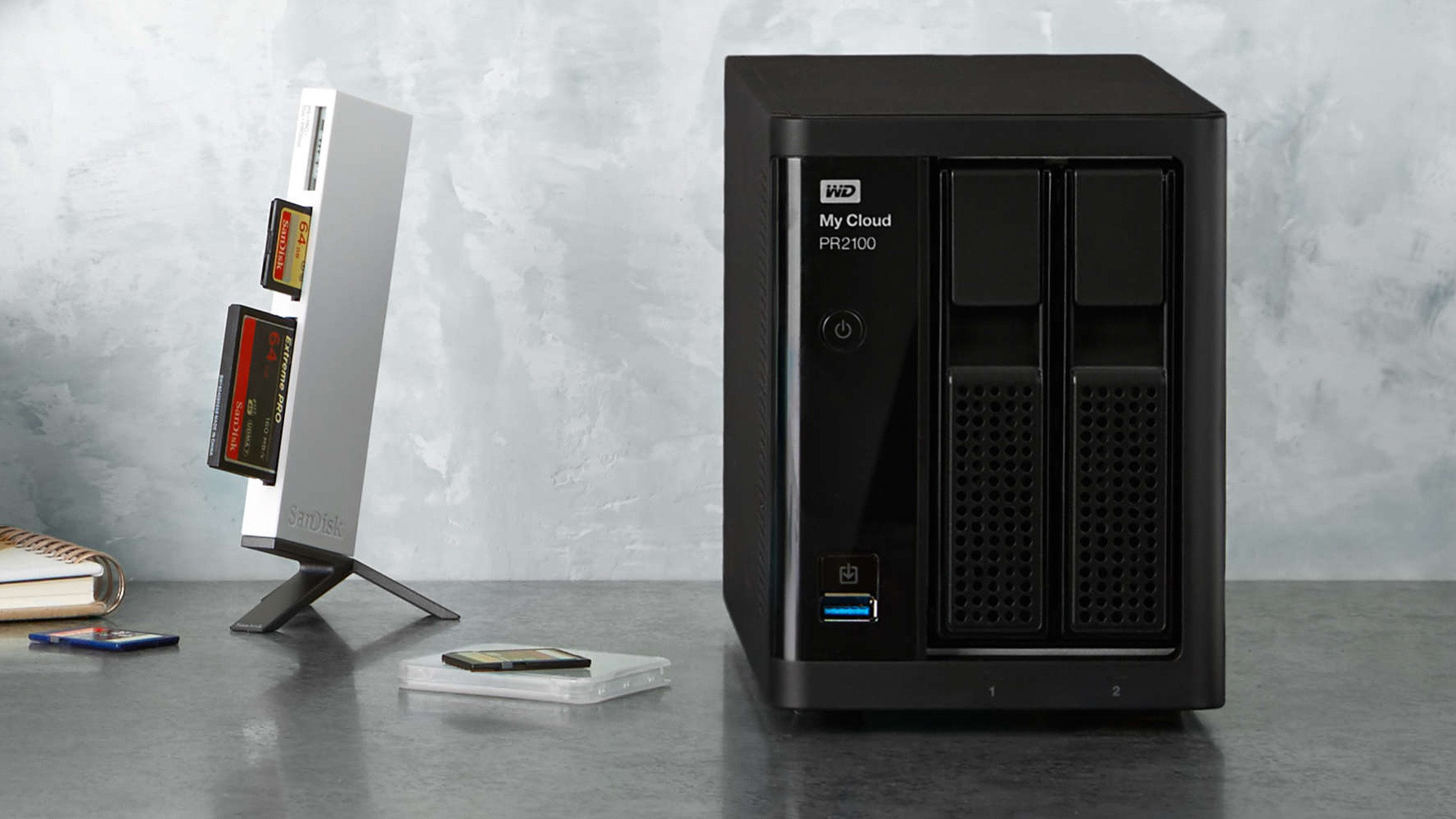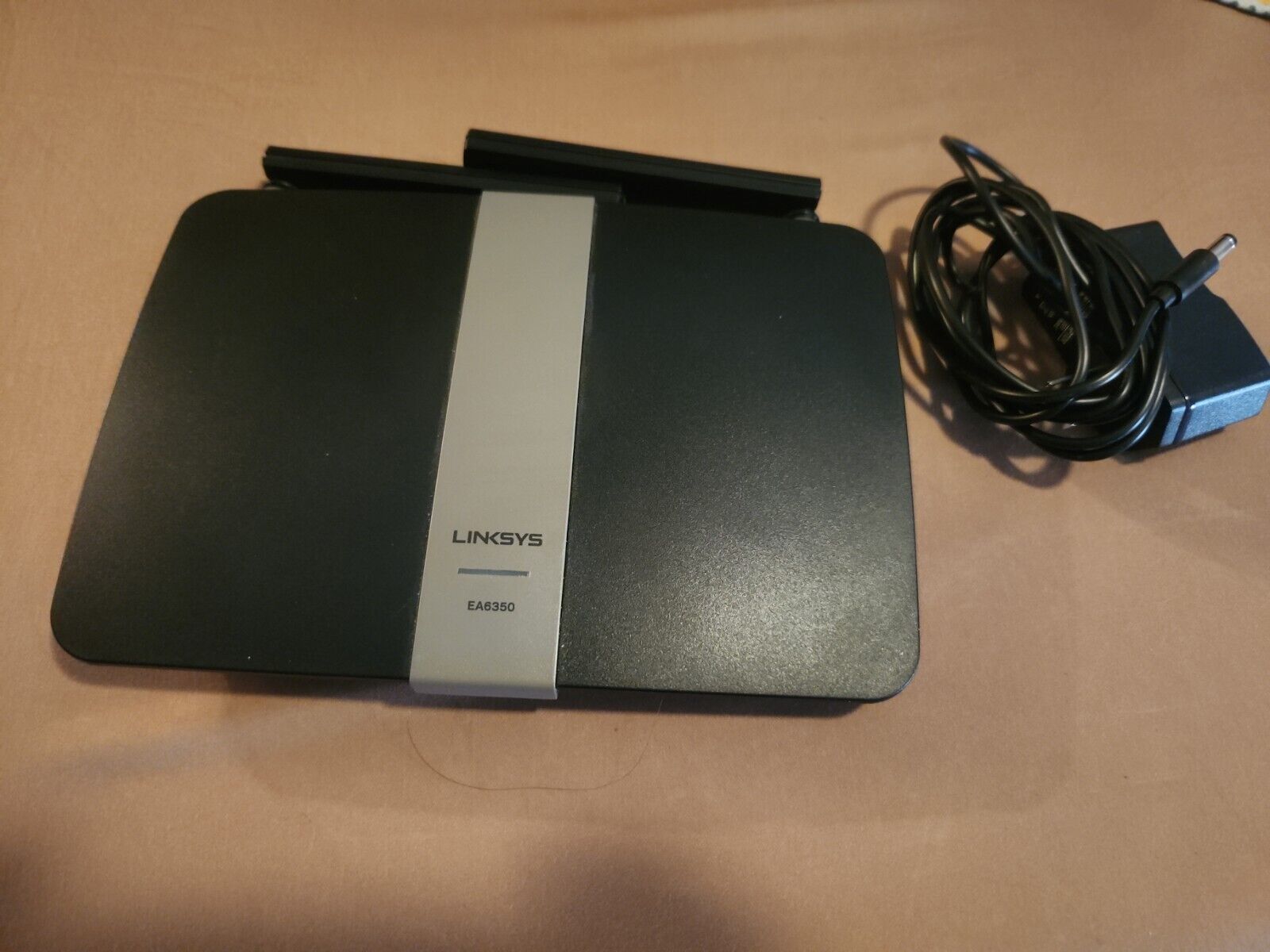Introduction
Network Attached Storage (NAS) has become an integral part of modern data management, providing a centralized storage solution for homes and businesses alike. As the volume and sensitivity of stored data continue to grow, the need for robust security measures becomes increasingly paramount. One such security measure is the requirement for credentials when accessing NAS devices. In this article, we will delve into the reasons behind this need, the types of credentials involved, their importance, and best practices for securing NAS credentials.
The world of data storage and management is evolving at a rapid pace, with NAS devices playing a crucial role in this landscape. Understanding the significance of credentials in the context of NAS is essential for ensuring the security and integrity of stored data. Whether you are a home user safeguarding personal files or a business protecting sensitive corporate information, comprehending the underlying principles of NAS credentials is key to maintaining a secure storage environment.
Throughout this article, we will explore the nuances of NAS credentials, shedding light on their role in fortifying data access and protection. By the end, readers will have a comprehensive understanding of why NAS demands credentials, the various types of credentials involved, their significance, and best practices for ensuring the security of these credentials. Let's embark on this insightful journey into the world of NAS security and credentials.
What is Network Attached Storage (NAS)?
Network Attached Storage (NAS) is a dedicated file storage device that provides local area network (LAN) nodes with file-based data storage services through a standard Ethernet connection. It allows multiple users and heterogeneous client devices to retrieve data from centralized disk capacity. NAS devices are designed to facilitate data access, file sharing, and backup across a network, serving as a convenient and efficient solution for managing digital content.
Unlike traditional file servers, NAS systems are specifically engineered for file storage and retrieval, offering simplified management and configuration. They often operate on a client-server model, where the NAS device acts as a server, providing file-based data storage services to connected clients. This architecture enables seamless data sharing and collaboration among users within a network environment.
NAS devices come in various configurations, ranging from single-drive systems to multi-bay enclosures that can accommodate multiple hard drives. They are equipped with their own operating systems and management interfaces, allowing users to customize settings, manage access permissions, and configure data protection mechanisms such as RAID (Redundant Array of Independent Disks).
Furthermore, NAS devices support a wide array of protocols, including Network File System (NFS), Server Message Block (SMB), and File Transfer Protocol (FTP), enabling compatibility with different operating systems and network environments. This versatility makes NAS an ideal choice for both home and business users seeking efficient and scalable storage solutions.
As the volume of digital content continues to expand exponentially, the role of NAS in data storage and management has become increasingly pivotal. Its ability to centralize and streamline file storage, access, and sharing processes makes it an indispensable tool in today’s data-driven world. Understanding the fundamental concepts and functionalities of NAS lays the groundwork for comprehending the importance of securing access to these devices through robust credentials.
Why Does NAS Want Credentials?
Network Attached Storage (NAS) devices require credentials as a fundamental security measure to control access to stored data and protect sensitive information from unauthorized users. By enforcing the use of credentials, NAS devices ensure that only authorized individuals or entities can access, modify, or manage the stored files and directories. This authentication mechanism serves as a barrier against unauthorized intrusion, data breaches, and potential exploitation of valuable digital assets.
One of the primary reasons NAS wants credentials is to establish a secure and verifiable identity for users seeking access to the stored data. Through the use of credentials, such as usernames and passwords, NAS devices can authenticate the legitimacy of individuals attempting to connect to the storage system. This authentication process helps prevent unauthorized access attempts and safeguards the confidentiality and integrity of the stored data.
Moreover, credentials play a pivotal role in enforcing access control policies within the NAS environment. By requiring valid credentials for access, NAS devices can implement granular permissions and restrictions, dictating which users or user groups have the rights to read, write, delete, or administer specific files and folders. This fine-grained access control empowers administrators to tailor access privileges according to the principle of least privilege, thereby minimizing the risk of data exposure or tampering.
Furthermore, the use of credentials enables NAS devices to maintain accountability and audit trails for data access and modifications. Each user’s credentials are tied to their actions within the NAS system, allowing administrators to track who accessed specific files, when the access occurred, and what operations were performed. This auditability enhances the overall security posture of the NAS environment and facilitates forensic investigations in the event of security incidents or compliance-related inquiries.
Additionally, the requirement for credentials aligns with industry best practices for securing data storage systems. It serves as a foundational element in the defense-in-depth approach to cybersecurity, where multiple layers of security measures are implemented to fortify critical assets. By mandating the use of credentials, NAS devices contribute to the overall resilience of the data storage infrastructure, mitigating the risk of unauthorized data exfiltration or manipulation.
Understanding the rationale behind the need for credentials in the context of NAS sheds light on the pivotal role they play in fortifying the security and integrity of stored data. As we delve deeper into the types of credentials involved and their significance, the importance of this authentication mechanism becomes increasingly apparent.
Types of Credentials for NAS
Network Attached Storage (NAS) systems utilize various types of credentials to authenticate and authorize users accessing the stored data. These credentials serve as the means by which individuals or entities prove their identity and gain entry to the NAS environment. Understanding the different types of credentials involved is crucial for comprehending the multifaceted nature of NAS security and access control.
1. Usernames and Passwords: The most common form of credentials used in NAS environments, usernames and passwords provide a basic yet essential means of authentication. Users are required to enter a unique username, often coupled with a strong password, to gain access to the NAS system. This combination serves as the primary line of defense against unauthorized access attempts and forms the cornerstone of user authentication.
2. Access Control Lists (ACLs): NAS devices often employ access control lists to define and enforce permissions for individual users or user groups. These lists specify which users have access to specific files, directories, or shares, along with the level of access granted (e.g., read-only, read-write, or administrative privileges). By configuring ACLs, administrators can finely tune the access rights of users, bolstering the overall security of the NAS environment.
3. Digital Certificates: In more advanced NAS setups, digital certificates are utilized to validate the identity of users and devices seeking access. These certificates, issued by a trusted certification authority, serve as cryptographic credentials that verify the authenticity of the entities presenting them. By leveraging digital certificates, NAS devices can establish secure, encrypted connections and ensure the integrity of data transmissions.
4. Two-Factor Authentication (2FA): Some NAS systems support two-factor authentication, which requires users to provide two forms of verification to access the storage environment. In addition to the traditional username and password, users may be prompted to enter a one-time code generated by a mobile authenticator app or received via SMS. This additional layer of authentication enhances the overall security posture of NAS by mitigating the risks associated with password-based attacks.
5. Biometric Credentials: In certain NAS deployments, especially those catering to high-security environments, biometric credentials such as fingerprint scans or facial recognition may be employed for user authentication. Biometric data serves as a unique identifier tied to an individual, adding an extra layer of identity verification to access the NAS system.
By encompassing a diverse range of credentials, NAS devices offer flexible and robust authentication mechanisms, catering to the varying security needs of users and organizations. The utilization of these credentials underscores the multifaceted approach to securing access to NAS and safeguarding the integrity of stored data.
Importance of Credentials for NAS
The importance of credentials in the context of Network Attached Storage (NAS) cannot be overstated, as they form the linchpin of security measures aimed at safeguarding stored data and controlling access within the NAS environment. The following key points underscore the significance of credentials for NAS:
1. Data Protection: Credentials play a pivotal role in protecting sensitive and confidential data stored on NAS devices. By enforcing strong authentication measures, NAS devices prevent unauthorized individuals from gaining access to critical information, thereby mitigating the risk of data breaches, theft, or unauthorized modifications.
2. Access Control: Credentials enable NAS administrators to implement granular access control policies, dictating who can access specific files, directories, and shares within the storage system. This fine-grained control ensures that only authorized users or user groups have the requisite permissions to view, modify, or manage data, reducing the likelihood of unauthorized data access or tampering.
3. Compliance Requirements: Many industries and regulatory frameworks mandate the implementation of robust access control measures to ensure compliance with data protection and privacy standards. Credentials serve as a foundational component in meeting these requirements, facilitating the enforcement of access policies and the maintenance of audit trails for data access and modifications.
4. Security Resilience: By requiring credentials for access, NAS devices contribute to the overall resilience of the data storage infrastructure. This multi-layered approach to security, bolstered by strong authentication mechanisms, mitigates the risk of unauthorized data exfiltration, manipulation, or compromise, enhancing the overall security posture of the NAS environment.
5. User Accountability: The use of credentials fosters user accountability within the NAS environment. Each user’s actions and interactions with the stored data are tied to their unique credentials, enabling administrators to track and audit access and modifications. This accountability framework enhances the transparency and traceability of user activities, which is crucial for security incident investigations and compliance adherence.
6. Mitigation of Insider Threats: Robust credential-based authentication helps mitigate insider threats by ensuring that even authorized users must authenticate themselves before accessing sensitive data. This preventive measure reduces the risk of internal data breaches or unauthorized data access by employees or privileged users.
Understanding the importance of credentials in the realm of NAS underscores their indispensable role in fortifying the security, integrity, and compliance adherence of data storage systems. As we delve into best practices for securing NAS credentials, it becomes evident that prioritizing these authentication measures is essential for maintaining a robust and resilient storage environment.
Best Practices for Securing NAS Credentials
Implementing robust security measures to safeguard Network Attached Storage (NAS) credentials is essential for fortifying the integrity and access control of stored data. The following best practices serve as foundational guidelines for securing NAS credentials:
1. Enforce Strong Password Policies: Establish and enforce stringent password policies for NAS user accounts, requiring the use of complex, unique passwords that are regularly updated. Implementing password complexity requirements, such as minimum length, inclusion of special characters, and avoidance of common dictionary words, enhances the resilience of user credentials.
2. Implement Two-Factor Authentication (2FA): Enable and encourage the use of two-factor authentication (2FA) for accessing NAS devices. By requiring an additional form of verification alongside passwords, such as a one-time code from a mobile authenticator app, 2FA adds an extra layer of security to the authentication process, mitigating the risks associated with password-based attacks.
3. Regularly Update and Patch NAS Firmware: Keep NAS firmware and software up to date with the latest security patches and updates. Regularly applying firmware updates helps address known vulnerabilities and strengthens the overall security posture of the NAS system, reducing the likelihood of unauthorized access or exploitation.
4. Employ Role-Based Access Control (RBAC): Leverage role-based access control mechanisms to assign permissions based on job roles and responsibilities. By defining access rights according to specific job functions, RBAC minimizes the risk of excessive privileges and unauthorized data access, enhancing the principle of least privilege within the NAS environment.
5. Encrypt Data Transmission and Storage: Utilize encryption protocols to secure data transmission and storage within the NAS environment. Employing robust encryption mechanisms, such as TLS (Transport Layer Security) for data in transit and AES (Advanced Encryption Standard) for data at rest, safeguards sensitive information from unauthorized interception or access.
6. Conduct Regular Security Audits and Monitoring: Implement proactive security monitoring and conduct regular audits of NAS access logs, user activities, and authentication attempts. By scrutinizing access patterns and identifying anomalous behavior, administrators can detect potential security incidents or unauthorized access attempts, enabling timely intervention and remediation.
7. Educate Users on Security Best Practices: Provide comprehensive security awareness training to NAS users, emphasizing the importance of safeguarding credentials, recognizing phishing attempts, and adhering to secure access practices. Educating users on security best practices fosters a culture of vigilance and proactive risk mitigation within the NAS environment.
8. Secure Remote Access: If remote access to NAS is required, employ secure VPN (Virtual Private Network) connections and multi-factor authentication to ensure the integrity and confidentiality of data transmissions. Restrict remote access privileges to authorized users and devices, minimizing the exposure to potential external threats.
By adhering to these best practices, organizations and individuals can bolster the security of NAS credentials, mitigate the risk of unauthorized access, and fortify the overall resilience of their data storage infrastructure. Prioritizing these measures is instrumental in maintaining a secure and compliant NAS environment.
Conclusion
Network Attached Storage (NAS) serves as a cornerstone of modern data management, offering a centralized and efficient solution for storing, accessing, and sharing digital content. The imperative role of credentials in securing access to NAS devices cannot be overstated, as they form the bedrock of data protection, access control, and compliance adherence within the NAS environment.
By delving into the rationale behind the need for credentials, the types of credentials involved, their importance, and best practices for securing them, we have gained a comprehensive understanding of the pivotal role they play in fortifying the security and integrity of NAS systems.
From enforcing strong password policies and implementing two-factor authentication to conducting regular security audits and educating users on security best practices, the best practices outlined serve as essential guidelines for safeguarding NAS credentials and maintaining a resilient storage environment.
As the digital landscape continues to evolve and the volume of stored data proliferates, the significance of robust credential-based security measures becomes increasingly pronounced. Whether in a home setting safeguarding personal files or in a business environment protecting sensitive corporate data, the principles of securing NAS credentials remain universally crucial.
Embracing these principles not only mitigates the risk of unauthorized access and data breaches but also fosters a culture of proactive security awareness and compliance adherence. By prioritizing the security of NAS credentials, individuals and organizations can fortify the confidentiality, integrity, and availability of their stored data, ensuring a robust and resilient storage infrastructure.
In essence, understanding, prioritizing, and implementing stringent security measures for NAS credentials is paramount for upholding the trust, privacy, and security of the data entrusted to NAS devices. As we navigate the ever-changing landscape of digital storage and security, the foundational role of credentials remains steadfast in fortifying the resilience and integrity of NAS environments.

























